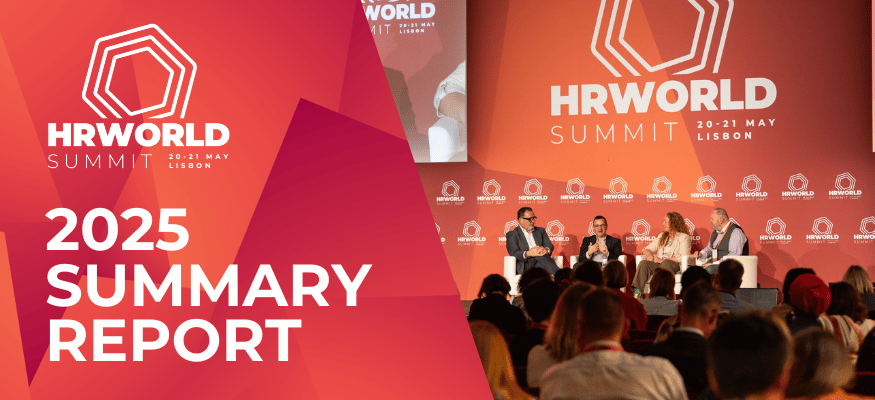In the world of medicine, we know prevention is the most cost-effective intervention. In the world of business, however, we often wait until things go wrong before we act. When it comes to corporate health, that reactive mindset is no longer sustainable. The future belongs to organisations that embrace corporate health as a proactive and strategic priority. It’s time to reframe how we think about health in the workplace. Not as a box-ticking exercise or a set of wellness initiatives, but as a strategic foundation.
The Real Business Case for Prevention
The numbers are compelling. Organisations that invest in proactive health strategies see measurable improvements in employee engagement, retention, and productivity. They also outperform their competitors in innovation and resilience —two critical assets in today’s uncertain economy.
More importantly, the ROI (Return of Investment) of prevention is no longer just a theory.
In healthy organisations:
- Employee turnover is down up to 40%.
- Sick leave days are reduced by an average of 25%.
- Team performance significantly increases.
- Innovation grows with higher levels of trust and psychological safety.
- Profitability increases with EBITDA up by over 15%.
These outcomes are not accidental. They are the result of intentional investments in mental, physical, and social health, meaningful work, leadership culture, and environments where employees can flourish — not just function.
From Insights to Action: Leveraging AI to Drive ROI
Modern technology offers new opportunities to strengthen the business case for corporate health. One of today’s most powerful tools is AI-based prediction modelling. These tools help calculating the potential ROI and EBITDA growth from your corporate health initiatives by simulating future outcomes based on real company data.
Here is how you can use it effectively:
- Quantify the costs of absenteeism and presenteeism by department, demographic, and job function.
- Model the financial impact of reducing stress levels, increasing engagement, or improving team climate.
- Forecast long-term gains from implementing specific interventions (e.g. leadership coaching, resilience programs, workload redesign).
AI-driven People Analytics can go one step further by identifying patterns and root causes of health-related performance issues across teams and timeframes. These insights support better strategic decisions and allow for earlier interventions. Moreover, they enable predictive modelling that helps anticipate emerging risks before they affect operations.
This data-driven approach enables HR and Executive teams to build a value-driven Corporate Health Strategy — one that is anchored in financial logic and human outcomes.
When you begin to identify the hard numbers behind workforce health challenges, the impact becomes undeniable. And often, you will be surprised by just how much healthier, more productive, and more profitable your organization can become.
HR Tip: Start by identifying your baseline. Use these insights to decide building a value-driven Corporate Health Strategy. When financial leadership realizes the ROI, demand for implementation will follow.
The Non-Linear Path to Thriving Organizations
Healthy organisations do not emerge from policy or internal guidelines alone. They are cultivated through intentional culture-building and empowering leadership. The journey to a truly healthy organisation is non-linear — it evolves through continuous alignment between leadership behaviour, corporate values, and daily actions.
Top management plays a decisive role in this transformation. When executives visibly prioritize their own health, they set a powerful precedent. This ‘Leadership by example’ is essential:
Corporate Health must be demonstrated, not delegated.
Leaders must actively live the culture they want to see — and be held accountable against clearly defined Corporate Health KPIs.
Embedding health into the core of leadership means addressing uncomfortable realities: stress in high-performing teams, unspoken burnout, dysfunctional dynamics, and the toll of permanent availability. Future-fit organizations are those that train and empower their leadership teams to recognize these risks early and act decisively.
Culture is not what is written on the wall — it is what is tolerated and repeated daily.
Every organization carries implicit narratives about performance and well-being. Does your culture equate exhaustion with dedication? Is vulnerability perceived as weakness?
Changing these narratives is a challenging but most impactful shift. It requires consistent storytelling, role modelling, and celebrating small wins. When people see that how they work matters as much as what they achieve, organisations start to thrive.
How to Start: Identify, Change, Thrive
A successful Corporate Health strategy begins with awareness. You cannot change what you do not see.
- Identify
-
- Conduct a corporate health assessment: not just on sick-leave days, but on energy, engagement, and resilience. People Analytics tools can support.
- Use pulse surveys, exit interviews, and leadership 360’s to uncover hidden risks.
- Involve employees in identifying stressors and recovery needs.
- Change
- Act on data and insights, not assumptions.
- Start small: redesign one team’s workflow, pilot a new leadership behaviour model, test flexible hours in one department.
- Equip managers with the skills to support corporate health conversations.
- Thrive
- Track progress beyond KPIs — look at trust levels, innovation outcomes, and talent retention.
- Celebrate leaders who embody preventive leadership.
- Share success stories that connect business success with human flourishing.
Final Thought: Designing for Health is Designing for the Future
In a world of rapid change and increasing demands, the true competitive advantage of companies lies in the capacity to stay healthy while performing at the highest level.
HR leaders and CEOs, have the power to shape that future — by shifting from reactive action to proactive design. By viewing corporate health as a strategic priority, not a side project. And by leading with a mindset that values prevention not only as the wiser choice, but as the more profitable way.
Finally, healthy organisations are more productive. They thrive — with purpose, with resilience, and with the people who make it all possible.
Conclusion: Corporate Health is not a cost — it is an investment with tangible ROI and strategic returns.
Join Dr. Bernard Kaumanns in his masterclass on May 21, 10:45 AM









